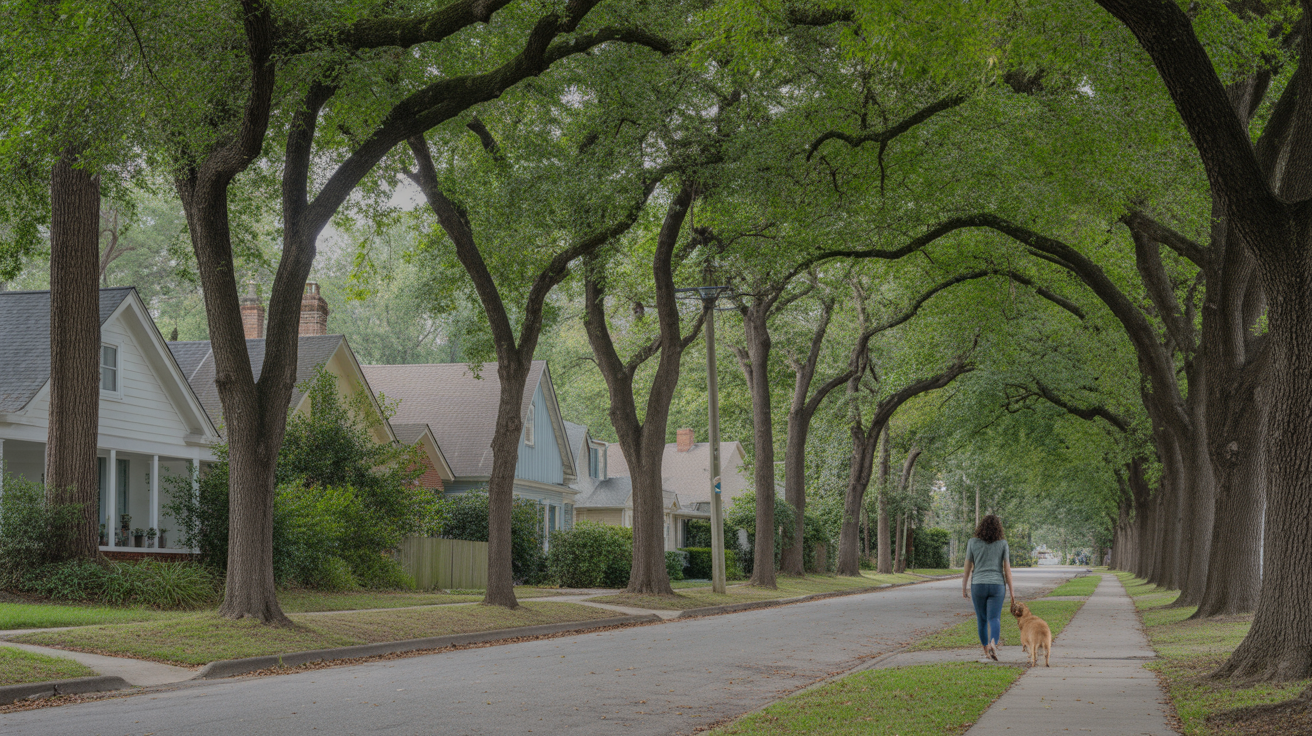Wake Forest, NC vs. Raleigh, NC: Cost of Living Comparison (2025)
This article provides a cost of living comparison: Wake Forest vs Raleigh. It is perfect for families relocating, professionals choosing between job offers, or anyone comparing the real-life cost of Wake Forest vs Raleigh in 2025.
Imagine Lila, a graphic designer earning $5,500 per month in gross income. In Raleigh, she pays $1,650 for a 1-bedroom apartment. Groceries, utilities, and miscellaneous expenses add another $1,100. Her total monthly spending is around $2,750.
If Lila moved to Wake Forest, she could rent a similar apartment for $1,400. Groceries and utilities would cost about $950. Her total monthly expenses in Wake Forest come to $2,350 — a savings of $400 compared to Raleigh.

1. Housing Costs
Housing is the biggest factor in the cost of living difference between Wake Forest and Raleigh. Here’s a quick comparison:
| Housing Type | Wake Forest | Raleigh |
|---|---|---|
| 2BR Apartment | $1,200 | $1,500 |
| 3BR House | $1,800 | $2,200 |
🏆 Winner: Wake Forest
The median home price in Wake Forest is around $450,000, while Raleigh homes have a median of $500,000. Rents are also 15-20% lower in Wake Forest.
2. Utilities and Energy Costs
Utility costs are fairly similar between the two cities. Expect to pay around $150 for electricity, $50 for water, and $70 for internet in either location.
Wake Forest residents might save a bit on heating and cooling due to milder weather. Raleigh summers are a few degrees hotter on average.
🏆 Winner: Wake Forest, but it’s close
3. Groceries and Daily Expenses

Grocery costs are about 5% lower in Wake Forest compared to Raleigh. A gallon of milk is around $3.50 in Wake Forest and $3.70 in Raleigh. Restaurant prices are nearly identical.
For a sample monthly budget in Wake Forest, expect to spend around $400 on groceries for a family of two. In Raleigh, budget closer to $425.
🏆 Winner: Wake Forest
4. Taxes and Fees
Both cities have a property tax rate of 0.6%. Wake Forest has slightly lower utility fees and service charges.
If you live in a neighborhood with an HOA, fees are around $200/month in Wake Forest. In Raleigh, HOA dues average $250/month.
🏆 Winner: Wake Forest
Cost of Living in Wake Forest vs Raleigh
| Category | Wake Forest | Raleigh |
|---|---|---|
| Housing | $1,400 | $1,700 |
| Utilities | $270 | $280 |
| Groceries | $400 | $425 |
| Transportation | $150 | $130 |
| Taxes | $200 | $250 |
| Miscellaneous | $300 | $350 |
| Estimated Monthly Total | $2,720 | $3,135 |
6. Lifestyle Fit
Wake Forest offers a slower pace and more space for the money. Many neighborhoods are walkable, with nearby parks and greenways. Commutes are about 10 minutes longer on average compared to Raleigh.
Raleigh provides an urban feel, with more dining and entertainment options. Public transit is more accessible. Traffic noise is more common than in Wake Forest.
7. FAQ
Is Wake Forest more affordable than Raleigh?
Yes, the cost of living is about 10-15% lower in Wake Forest. Housing is the biggest difference, with rents and mortgages costing less in Wake Forest.
Which city has lower rent?
Wake Forest has lower rent, with prices around 15-20% less than similar apartments or houses in Raleigh.
Where is it cheaper to buy a home?
Median home prices are about $50,000 lower in Wake Forest compared to Raleigh. Property taxes are similar in both cities.
8. Conclusion
For a full cost of living breakdown for Wake Forest, housing and groceries are the main factors that make it more affordable than Raleigh. A household moving from Raleigh to Wake Forest might save $400/month on housing alone.
Wake Forest is ideal for those who prefer a suburban lifestyle and don’t mind a slightly longer commute. Raleigh appeals to those who value walkability and proximity to urban amenities.
Ultimately, both Wake Forest and Raleigh are relatively affordable for the region. Consider touring neighborhoods in each city to see which feels like home.
